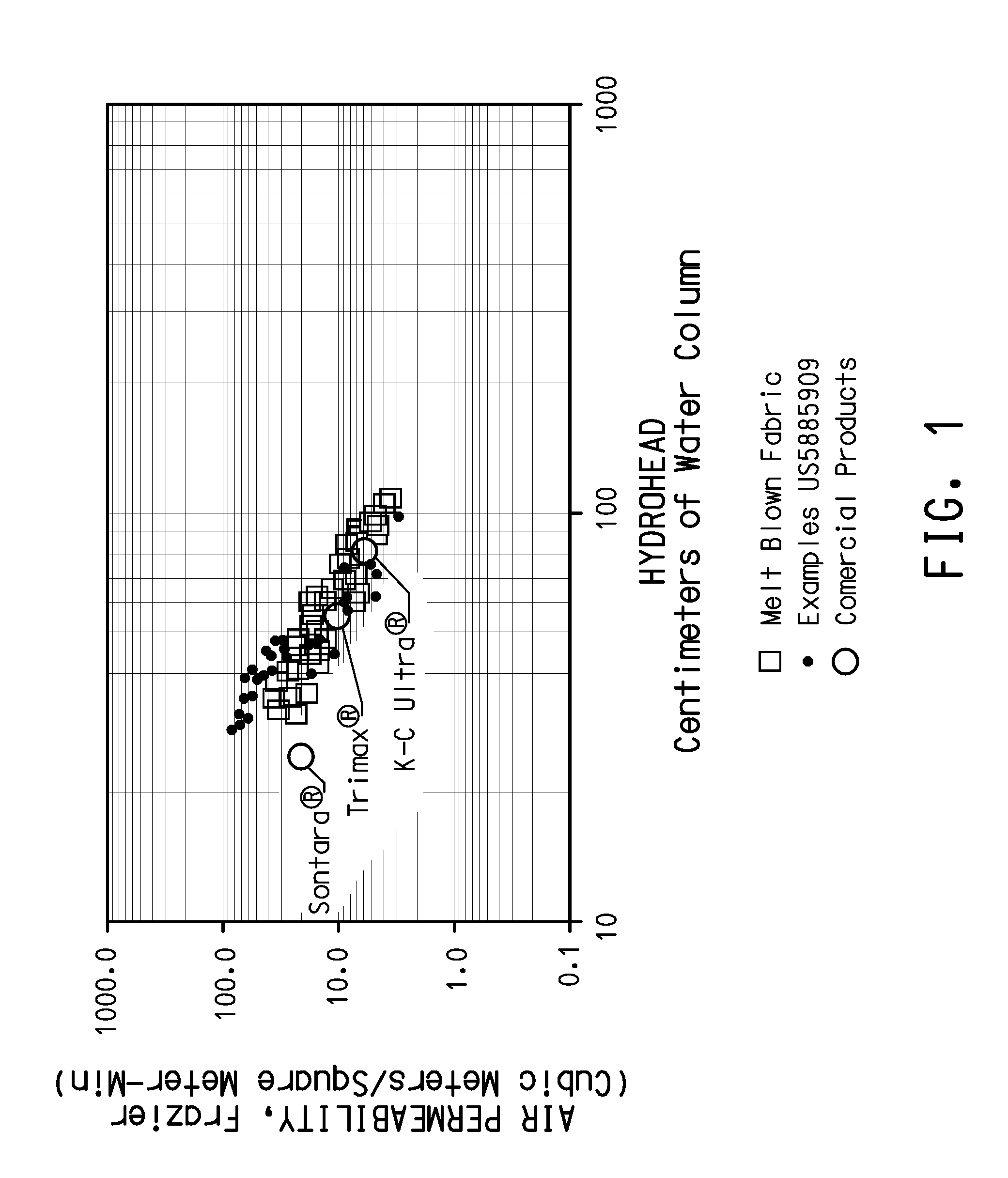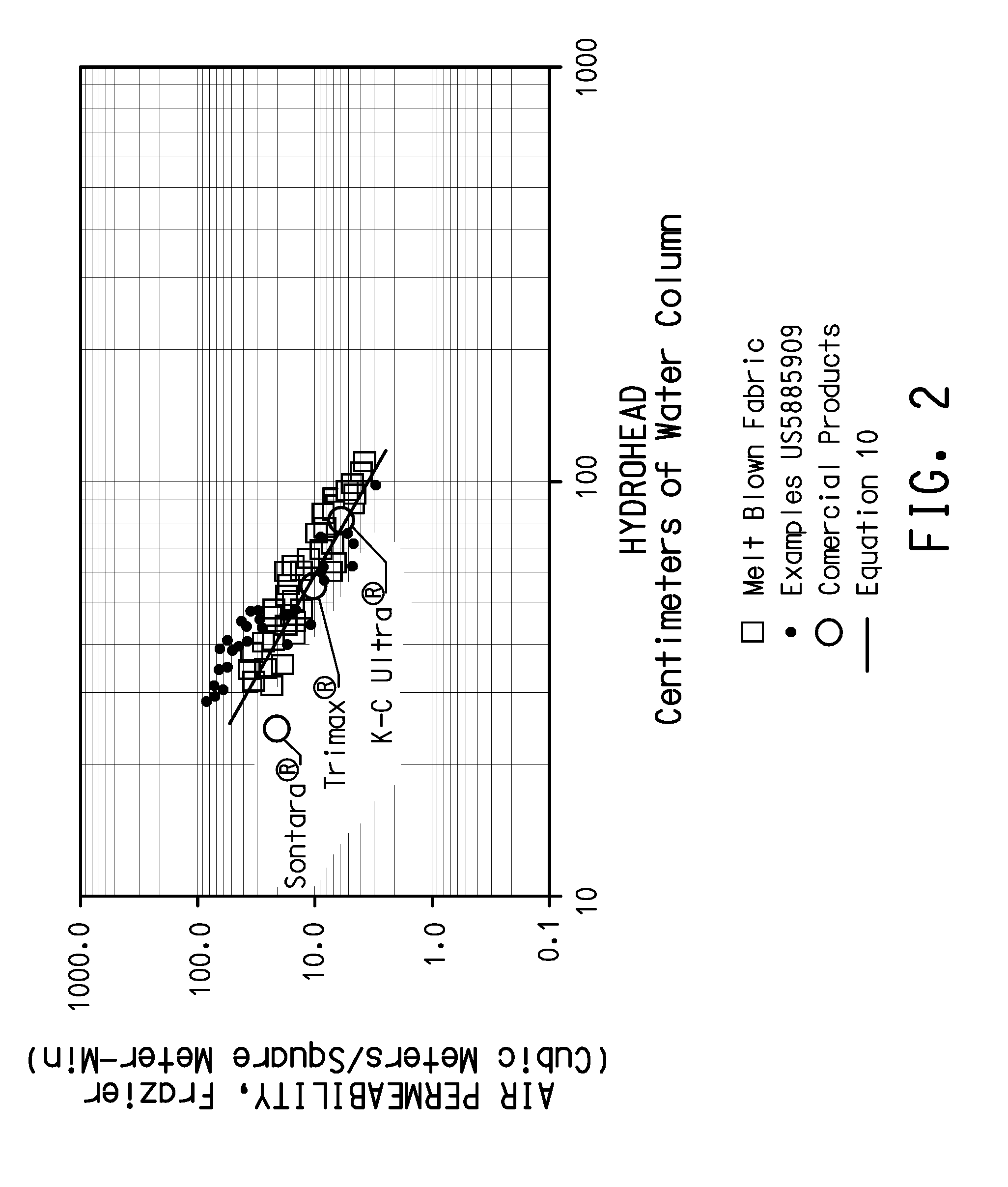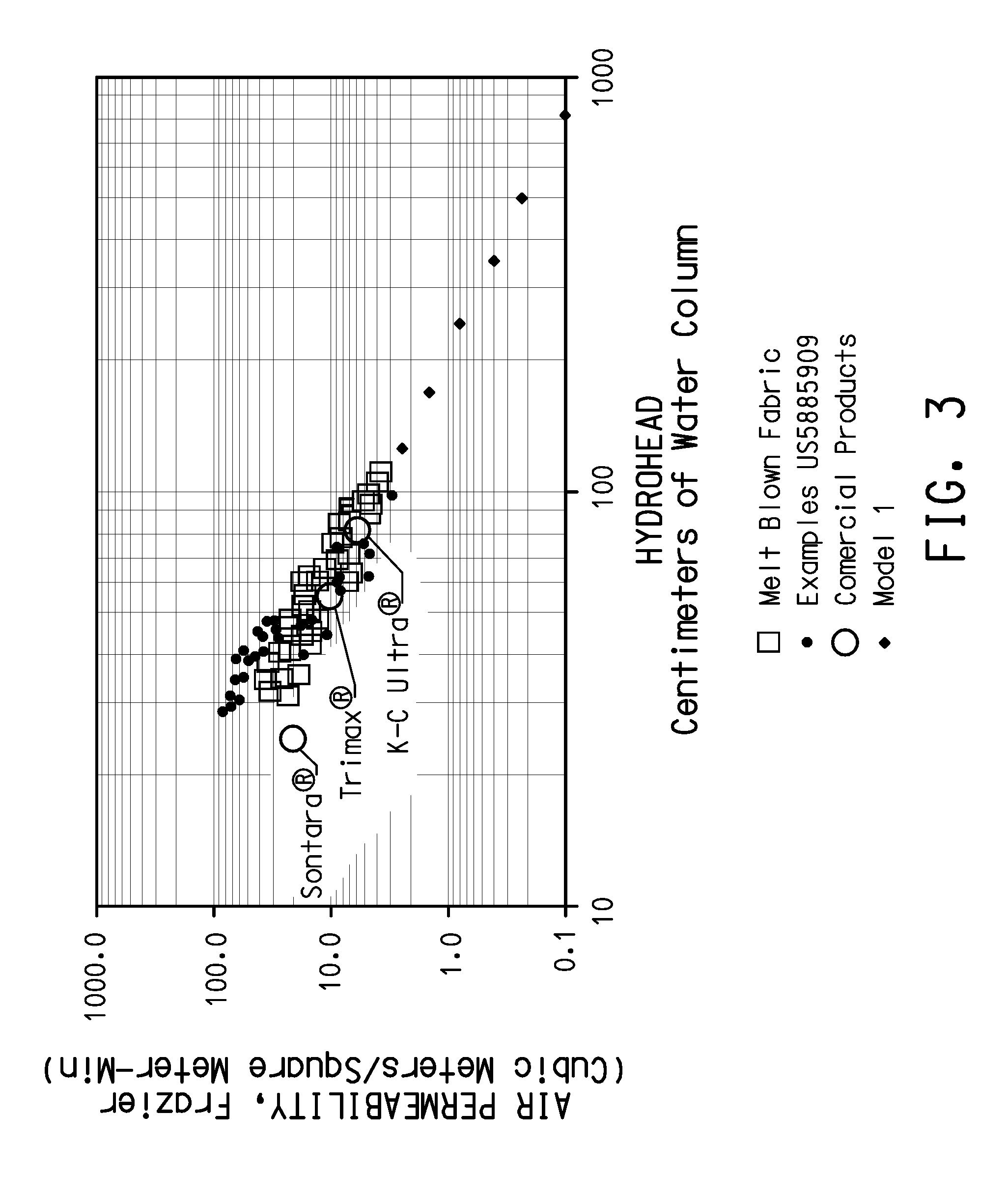Extremely high liquid barrier fabrics
a technology of liquid barrier fabric and fabric, applied in the field of nonwoven fibrous structure, can solve the problems of life-threatening heat stress, clothing limitations impose limitations on activity, and higher air flow resistan
- Summary
- Abstract
- Description
- Claims
- Application Information
AI Technical Summary
Benefits of technology
Problems solved by technology
Method used
Image
Examples
examples
[0066]Sample fabrics were made by dissolving various polymers in suitable solvents which were then fed into an electrospinning apparatus, such as that described in U.S. Pat. No. 4,127,706, incorporated herein by reference. The fine fibers formed were deposited onto a melt blown fabric support layer to form a barrier layer of the fine fibers, and mechanical strength was imparted to the samples by sandwiching the fine fiber / melt blown layers between layers of spunbond polyester fibers, to form a four-layer laminate of spunbond / melt blown / fine fiber / spunbond configuration.
[0067]Fine fibers were spun from two different hydrophobic polymers: Kraton™ D1134x, a styrene-butadiene copolymer (specific gravity=0.94), available from Kraton™ Polymers of Houston, Tex.; and Kynar™ 761, a polyvinylidene fluoride polymer (specific gravity=1.76), available from Atofina Chemicals, Inc. of Philadelphia, Pa. Kraton™ fine fibers were spun from solutions of 9 wt. % polymer in a mixed solvent of 88 / 12 wt %...
examples 1-9
[0077]Kraton™ D1133x copolymer was dissolved in a mixed solvent of 88 wt. % tetrahydrofuran / 12 wt. % dimethyl acetamide at a polymer concentration of 9 wt. %, and electrospun at −18 KV at a rate of 0.5 ml / hr. Fine fibers were deposited onto samples of 18 g / m2 bicomponent melt blown fabric described in the Control Examples at a collection distance of approximately 22 cm. The fine fiber layer was then covered with a layer of spunbonded polyester, removed from the sample target. The layer of melt blown collection fabric was also covered with a layer of spunbonded polyester and all four layers were consolidated into a laminate. The barrier properties of the Examples were measured and are reported below in Table 4.
[0078]The fine fibers collected were measured by scanning electron microscopy and found to have diameters in a general range of between about 0.1 to 1.8 micrometers, with the average fiber diameters believed to be less than about 1 micrometer.
TABLE 4Fiber loadFrazierHydroheadBu...
examples 10-19
[0080]Kynar™ polymer was dissolved in acetone solvent at a polymer concentration of 15 wt. %, and electrospun at −20 KV at a rate of 5 ml / hr. Fine fibers were deposited onto samples of 18 g / m2 bicomponent melt blown fabric described in the Control Examples at a collection distances of approximately 22-30 cm. The fine fiber layer was then covered with a layer of spunbonded polyester, removed from the sample target. The layer of melt blown collection fabric was also covered with a layer of spunbonded polyester and all four layers were consolidated into a laminate. The barrier properties of the Examples were measured and are reported below in Table 5.
[0081]The fine fibers collected were measured by scanning electron microscopy and found to have diameters in a general range of between about 0.14 to 2.8 micrometers, with the average fiber diameters believed to be less than about 1 micrometer.
TABLE 5Fiber loadFrazierHydroheadBubblepointExample #(g / m2)(m3 / m2-min)(cmwc)(micrometers)1013.611...
PUM
| Property | Measurement | Unit |
|---|---|---|
| diameters | aaaaa | aaaaa |
| diameters | aaaaa | aaaaa |
| diameters | aaaaa | aaaaa |
Abstract
Description
Claims
Application Information
 Login to View More
Login to View More - R&D
- Intellectual Property
- Life Sciences
- Materials
- Tech Scout
- Unparalleled Data Quality
- Higher Quality Content
- 60% Fewer Hallucinations
Browse by: Latest US Patents, China's latest patents, Technical Efficacy Thesaurus, Application Domain, Technology Topic, Popular Technical Reports.
© 2025 PatSnap. All rights reserved.Legal|Privacy policy|Modern Slavery Act Transparency Statement|Sitemap|About US| Contact US: help@patsnap.com



